Filter by
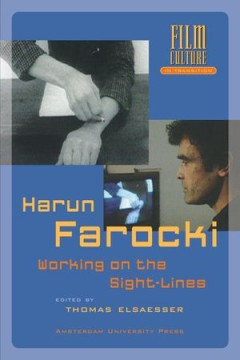
Harun Farocki
For more than thirty years Farocki has been a filmmaker, documentarist, film-essayist and installation artist. What preoccupies him above all is not so much an image of life, but the life of images, as they surround us in the newspapers, the cinema, history books, user manuals, posters, CCTV footage and advertising. His vast oeuvre of some sixty films includes three feature films (Zwischen den …
- Edition
- -
- ISBN/ISSN
- 9789053566350
- Collation
- -
- Series Title
- -
- Call Number
- 791.43 ELS h
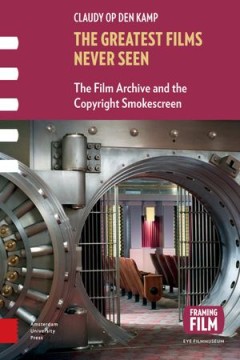
The Greatest Films Never Seen: The Film Archive and the Copyright Smokescreen
Orphan works, or artworks for which no copyright holder is traceable, pose a growing problem for museums, archives, and other heritage institutions. As they come under more and more pressure to digitize and share their archives, they are often hampered by the uncertain rights status of items in their collections. This book uses the prism of copyright to reconsider human agency and the politics …
- Edition
- -
- ISBN/ISSN
- 9789048531042
- Collation
- -
- Series Title
- -
- Call Number
- 791 KAM g
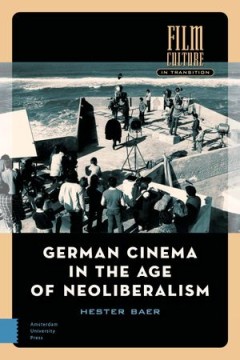
German Cinema in the Age of Neoliberalism
This book presents a new history of German film from 1980-2010, a period that witnessed rapid transformations, including intensified globalization, a restructured world economy, geopolitical realignment, and technological change, all of which have affected cinema in fundamental ways. Rethinking the conventional periodization of German film history, Baer posits 1980-rather than 1989-as a crucial…
- Edition
- -
- ISBN/ISSN
- 9789048551958
- Collation
- -
- Series Title
- -
- Call Number
- 791.43 BAE g
From Grain to Pixel: Third Revised Edition: The Archival Life of Film in Tran…
In From Grain to Pixel , Giovanna Fossati analyzes the transition from analog to digital film and its profound effects on filmmaking and film archiving. Reflecting on the theoretical conceptualization of the medium itself, Fossati poses significant questions about the status of physical film and the practice of its archival preservation, restoration and presentation. From Grain to Pixel attempt…
- Edition
- -
- ISBN/ISSN
- 9789463725002
- Collation
- -
- Series Title
- -
- Call Number
- 791.43 FOS f
From Grain to Pixel: The Archival Life of Film in Transition
Film is in a state of rapid change, with the transition from analog to digital profoundly affecting not just filmmaking and distribution, but also the theoretical conceptualization of the medium film and the practice of film archiving. New forms of digital archives are being developed that make use of participatory media to provide a more open form of access than any traditional archive has off…
- Edition
- -
- ISBN/ISSN
- 9789089641397
- Collation
- -
- Series Title
- -
- Call Number
- 791.43 FOS f
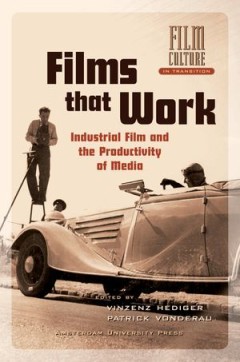
Films that Work
The history of industrial films - an orphan genre of twentieth-century cinema composed of government-produced and industrially sponsored movies that sought to achieve the goals of their sponsors, rather than the creative artists involved - seems to have left no trace in filmic cultural discourse. At its height the industrial film industry employed thousands, produced several trade journals and …
- Edition
- -
- ISBN/ISSN
- 9789089640130
- Collation
- -
- Series Title
- -
- Call Number
- 791 VON f
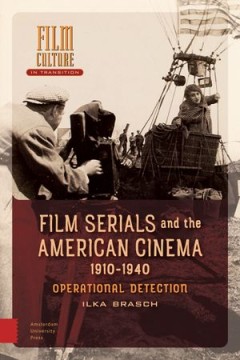
Film Serials and the American Cinema, 1910-1940
Before the advent of television, cinema offered serialised films as a source of weekly entertainment. This book traces the history from the days of silent screen heroines to the sound era's daring adventure serials, unearthing a thriving film culture beyond the self-contained feature. Through extensive archival research, Ilka Brasch details the aesthetic appeals of film serials within their con…
- Edition
- -
- ISBN/ISSN
- 9789048537808
- Collation
- -
- Series Title
- -
- Call Number
- 791.43 BRA f
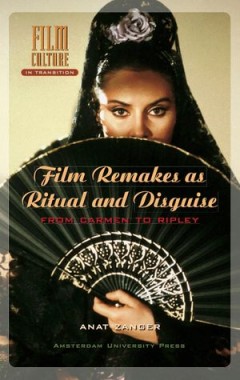
Film Remakes as Ritual and Disguise
The first book-length account of the symbolic chains that link remakes and explain their disguises, Film Remakes as Rituals and Disguise is also the first book to explore how and why these stories are told. Anat Zanger focuses on contemporary retellings of three particular tales-Joan of Arc, Carmen, and Psycho-to reveal what she calls the remake's "rituals of disguise." Joan of Arc, Zanger demo…
- Edition
- -
- ISBN/ISSN
- 9789053567845
- Collation
- -
- Series Title
- -
- Call Number
- 791.43 ZAN f
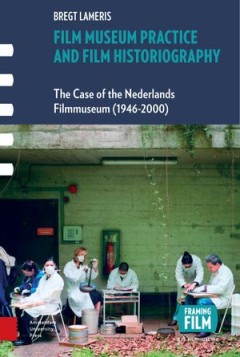
Film Museum Practice and Film Historiography: The Case of the Nederlands Film…
Rich in detail, this is a study of the interrelationships between film historical discourse and archival practices. Exploring the history of several important collections from the EYE Film Museum in Amsterdam, Bregt Lameris shows how archival films and collections always carry the historical traces of selection policies, restoration philosophies, and exhibition strategies. The result is a compe…
- Edition
- -
- ISBN/ISSN
- 9789048526741
- Collation
- -
- Series Title
- -
- Call Number
- 791.43 LAM l
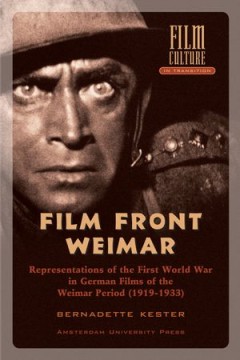
Film Front Weimar
This first book-length study shows how Germany tried to reconcile the horrendous experiences of the FirstWorld War through the films made in 1919-1933. Drawing on the analysis of twenty-five such films, and covering a wide range of documentaries as well as feature films on the reasons for the outbreak of the war, life at the front,war at sea and the home front, the author sketches out the histo…
- Edition
- -
- ISBN/ISSN
- 9789053565988
- Collation
- -
- Series Title
- -
- Call Number
- 791 KES f
 Computer Science, Information & General Works
Computer Science, Information & General Works  Philosophy & Psychology
Philosophy & Psychology  Religion
Religion  Social Sciences
Social Sciences  Language
Language  Pure Science
Pure Science  Applied Sciences
Applied Sciences  Art & Recreation
Art & Recreation  Literature
Literature  History & Geography
History & Geography